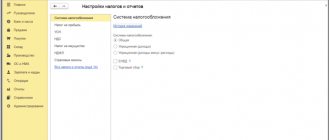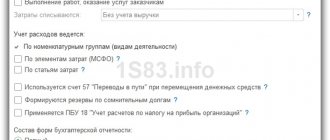Personal income tax rate options
The calculator provides the option to select the desired personal income tax rate - 9, 13, 15, 30 or 35%.
The specifics of applying this or that rate will be discussed below. As for direct calculations, you only need to select the rate you need and enter in the calculator field the amount from which you want to calculate the income tax.
The convenience of the calculator is that the amount does not need to be rounded to the nearest whole number. You can enter the amount in rubles and kopecks in the field, separating them with a comma.
Depending on what kind of calculation you need, you can click on the “Select personal income tax” or “Calculate personal income tax” button options. Accordingly, the calculator will give you the result in the form of personal income tax from the amount or the amount with personal income tax added to it.
Standard rate
The standard rate is 13%. It is used to calculate income tax in relation to citizens - residents of the Russian Federation, for whom, in accordance with Art. 224 of the Tax Code does not provide for a different rate.
Taxation at a rate of 13% applies to:
- wages;
- gbonus and vacation payments;
- dividends received.
For non-residents of the Russian Federation, a 13 percent rate applies in the following cases:
- receipt of income by a non-resident in the Russian Federation;
- official employment of a non-resident in the Russian Federation by invitation for highly qualified personnel;
- employment of a non-resident on the territory of the Russian Federation within the framework of the program for the resettlement of compatriots, for the entire duration of their stay as non-residents;
- employment in the Russian Federation of persons who have refugee status or under conditions of temporary stay in the Russian Federation;
- employment of non-residents on ships whose port of registration is the ports of the Russian Federation.
Rate of 30%
A 30 percent rate is applied to tax income received from securities, with the exception of dividends on Russian-issued shares, which are taxed at a 13 percent rate.
A rate of 30 percent applies to:
- accrual of taxes on income from securities for non-residents of the Russian Federation;
- accrual of taxes to any of the taxpayers who have not provided the Federal Tax Service with data allowing taxation at a different rate in accordance with the requirements of Art. 214 NK.
There are no deductions at this tax rate.
Rate of 35%
Calculation of personal income tax based on a rate of 35% is applied in accordance with Art. 224 Tax Code of the Russian Federation.
Payers are individuals, both residents and foreigners, who receive income in the Russian Federation. At the same time, tax residents are taxed at a rate of 30% in cases of receiving income from sources located both in Russia and abroad. Foreign citizens become taxpayers at a 30 percent rate only on income received from Russian sources.
A 30 percent tax applies on income originating from:
- winnings and prize money from promotions worth more than 4 thousand rubles;
- income from bank investments that exceed the key rate of the Central Bank of the Russian Federation by 5 points for domestic currency and over 9% for deposits in the currencies of other countries;
- income received as a result of savings on loan funds.
Deductions for such types of income are not applied.
Rate 15%
It is applied as a tax rate for non-residents of the Russian Federation who receive income as a result of owning shares in the capital of companies and organizations of the Russian Federation.
The tax base includes all types of income, namely:
- cash receipts;
- natural product;
- material benefit.
If there are different types of income, personal income tax is calculated separately for each of the above types.
Rate 9%
Article 224 of the Tax Code of the Russian Federation determines a 9 percent rate for calculating tax on:
- income received as interest on bonds with an issue date no later than January 1, 2007;
- income of the founders under trust management agreements by virtue of certificates issued no later than January 1, 2007.
How to determine the appropriate personal income tax rate
The law provides for the use of five rates for calculating personal income tax (Article 224 of the Tax Code of the Russian Federation):
- 9% - for dividends received before 01/01/2007;
- 13% is the basic rate applied to residents, refugees and highly qualified foreign specialists;
- 15% — dividends to non-residents from Russian companies;
- 30% - income of non-residents and payments on securities;
- 35% - winnings, prizes, interest on deposits, savings on interest when receiving borrowed funds.
From 2021, a progressive personal income tax rate will be applied. Income of individuals over 5 million rubles. are taxed at a higher rate - 15%. Income below the specified limit is still taxed at the rate of 13%.
The tax base can be reduced by the amount of tax deductions provided (Articles 219–221 of the Tax Code of the Russian Federation).
It should be understood that personal income tax can be paid by the taxpayer himself or through his employer. Here are some examples:
The mentioned deductions can also be obtained in different ways. Deductions for children are provided by the organization. The employee just needs to write an application to the accounting department, provide a copy of his birth certificate and a copy of his passport.
The right to receive a property deduction from a tax agent can be granted by the Federal Tax Service. To do this, you need to obtain a notice from the inspectorate for the employer and provide it to the payroll accountant. After this, personal income tax will not be withheld from payments to the employee until the amount specified in the notice is exhausted.
Deductions
Standard deductions for personal income tax with a 13 percent tax rate will be:
- 500 rubles;
- 3000 rubles:
- Deduction for dependents.
The list of citizens entitled to a 3,000-ruble deduction is restrictive, that is, limited. The categories of persons entitled to receive such a deduction include:
- persons who were either injured as a result of the Chernobyl accident or who took part in the events at the Chernobyl nuclear power plant;
- persons who were in one way or another involved in the events at the Shelter and Mayak objects;
- persons who took part in nuclear tests or participated in eliminating emergency situations that arose during testing.
The full list is given in Art. 218 Tax Code of the Russian Federation.
The list of categories of persons entitled to receive a five-hundred-ruble deduction is given in paragraphs 1 and 2 of Art. 218 Tax Code of the Russian Federation. In particular, these include:
- heroes of the Russian Federation and the USSR;
- order bearers of the Russian Federation and the USSR;
- WWII veterans;
- residents of besieged Leningrad and other categories.
Deductions for children are available to citizens who have dependent minors or disabled children, according to the following scale:
- 1,400 rubles for each child if there are up to two children in the family;
- 3000 for each child if there are three or more children in the family;
- 6,000 rubles to guardians for each child under their care;
- 12,000 for each disabled minor child or for a disabled person under 24 years of age, subject to full-time study.
If there is a percentage of 13 and there is a number of 15,000, then how much will this percentage of this number be and what is the formula for calculating the percentage? The answers are given below.
13% of 15000 = 1950
Formula for calculating percentage of a number:
First, let's create a proportion by writing the percentages in one fraction and the amounts in another fraction.
| 100% | = | 15000 |
| 13% | How many? |
Next, based on our proportion, cross-multiply the amount (15,000) by the desired percentage (13) and divide by 100 percent.
15000 ⋅ 13 ÷ 100 = 1950.
Answer: 1950. This means that from the original amount of 15,000, the required percentage of 13 will be 1950.
If the calculations involve, for example, borrowed funds, and we need to calculate how much we will overpay to the bank for the year of using borrowed funds, then we just need to add the initial amount with the found interest. The result will be 16950. This is the amount the loan will cost us.
There are times when it is necessary, on the contrary, to subtract the found percentage from the initial amount. For example, when we need to find out how much the product will cost after a discount. If we subtract, we get: 13050. We need to pay that much, but we will save 1950.
Tax calculation procedure
The algorithm for calculating personal income tax in 2021 is as follows:
- It is necessary to determine all income subject to personal income tax. These are the receipts of individuals, meaning material benefits and amenable to monetary assessment. An exception is the positions mentioned in Art. 217 of the Tax Code of the Russian Federation: pensions, alimony, scholarships, compensation for harm, etc.
- You must select the rates to use. They depend on the type of income and residence of the individual.
- For each rate you need to calculate the tax base. For labor income, taxed at 13 percent, it is defined as the amount of income minus deductions due to a citizen under the law. For other bets, it is calculated as the amount of income of a certain type.
- It is necessary to calculate income tax using special formulas and transfer the resulting amount to the budget.
Personal income tax is always calculated in whole numbers. Kopecks are rounded according to the rules of mathematics: less than 50 kopecks. – “down”, equal or more – “up”.
The award is subject to personal income tax
Progressive tax scale.
An increase in income tax in 2021 is one of the key topics of the current year. Politicians and economic observers began to calculate the possible benefits and losses of this step, opinions were divided, and the bills submitted to the State Duma did not provide clarity.
Some representatives of the political elite consider the increase in the tax burden on the population to be a premature measure, since the economy is not yet strong enough. Opponents argue their commitment to increasing personal income tax by the fact that Russia has the lowest income tax rate in the world; if it is increased slightly, the population and business will be able to get closer to international standards, but there will be no decrease in the level of well-being due to the insignificance of the amounts per person a person with an average salary.
Calculation of personal income tax in 2021: formulas
To determine income tax, the formula is used:
Personal income tax = NB * C, where
NB – tax base;
C – rate.
In the case of a resident’s labor income, the formula takes the form:
Personal income tax = (Income – Deductions) *0.13.
In the case of non-resident unearned income, the formula looks like:
Personal income tax = Income* 0.3.
If, when making calculations, an employee starts from salary in hand, a formula is required that describes the calculation of personal income tax:
Salary before tax = Cash in hand / 0.87;
Personal income tax = Amount in hand* 0.13 / 0.87.
When winning a cash prize in a lottery, personal income tax is calculated as:
Tax = Prize amount* 35%.
If a citizen receives income from renting out housing, the annual tax amount will be calculated as:
Personal income tax = Annual income *0.13 (rate applies to residents).
Will there be an increase in personal income tax in 2021?
On March 22, the Vedomosti newspaper reported that although the government had not reached a final decision on increasing the tax, the Cabinet had already reached a “consensus.” On the same day, Deputy Prime Minister Arkady Dvorkovich said that he “sees nothing wrong” with raising the income tax to 15%.
At the same time, as RBC sources noted, the financial and economic bloc - the Ministry of Finance and the Ministry of Economic Development - opposed the tax increase. The head of the department, Anton Siluanov, stated at the Sochi Forum that the Ministry of Finance does not support a possible change in personal income tax.
“I am against changing the personal income tax rate. There are different approaches: make it progressive, increase the rate, make progression along with a non-taxable minimum. It seems to me that there is no need to touch the tax, which works normally,” the minister said.
Examples of income tax calculations
Example No. 1
Mechanic Bogdanov V.V. works at Mospochinka LLC with a salary of 30,000 rubles. No documents confirming the right to tax deductions were submitted to the employer’s accounting department. How to determine the amount of income tax?
Bogdanov is a tax resident of Russia, so his labor income is taxed at a rate of 13%. To calculate personal income tax, we substitute the values into the formula:
Tax = 30,000* 0.13 = 3,900 rub.
Amount due to Bogdanov in hand = 30,000 – 3,900 = 26,100 rubles.
Example No. 2
Petrova A.A. works at Gorsbyt LLC with a salary of 40,000 rubles. Has two minor children, one of whom is disabled. She is a tax resident of the Russian Federation; she has not submitted documents confirming her right to social and property deductions. How to determine income tax for the current month?
The standard deduction for a child is 1,400 rubles, for a disabled person – 12,000 rubles. The amount of deductions will reduce the tax base.
Personal income tax should be calculated using the formula:
Tax = (40,000 – (1,400 + 12,000))* 0.13 = 3,458 rub.
The amount of income in hand will be 40,000 – 3,458 = 36,542 rubles.
Payment of dividends certificate: 2-NDFL
Example No. 3
Minaev S.E., a resident of Russia, lives in a dacha and rents out an apartment he owns for 25,000 rubles. per month. There is no provision for additional reimbursement of rent by tenants. What personal income tax must be declared and paid at the end of the year?
The annual rental income will be:
How to calculate personal income tax from salary: calculation formula
Employers calculate the tax base for employee income, taxed at a rate of 13%, based on the results of each month on an accrual basis from the beginning of the year (clause 3 of Article 226 of the Tax Code of the Russian Federation). The amount of income the employee receives must be reduced by the personal income tax deductions provided to him (clause 3 of Article 210 of the Tax Code of the Russian Federation). That is, the tax base is calculated using the formula:
Once the tax base for personal income tax has been determined, you can proceed to calculating the tax itself using the formula:
To calculate personal income tax, which must be withheld from the employee’s income for the current month, you need to use another formula:
Do not forget that personal income tax is calculated in full rubles. This means that the calculated tax amount must be rounded: amounts less than 50 kopecks are discarded, amounts 50 or more kopecks are rounded to the nearest ruble (Clause 6 of Article 52 of the Tax Code of the Russian Federation).
Procedure for calculating personal income tax: calculation example
/ condition / Salary E.O. Ivanova is 36,000 rubles. per month. She has a daughter aged 12, due to which E.O. Ivanova is provided with a standard deduction for a child in the amount of 1,400 rubles. per month. In addition, in April she was paid an additional bonus of 12,000 rubles. Let's determine the amount of personal income tax withheld from the employee's income for the month of April.
/ decision / The tax base for personal income tax for January-April will be:
36,000 rub. x 4 months + 12,000 rub. – (1400 rub. x 4 months) = 150,400 rub.
Personal income tax amount for January-April: 150,400 rubles. x 13% = 19,552 rub.
Personal income tax withheld from the employee’s income for January-March:
(36,000 rub. x 3 months – (1,400 rub. x 3 months)) x 13% = 13,494 rub.
Personal income tax withheld from income for April: RUB 19,552. – 13,494 rub. = 6,058 rub.
An example of personal income tax calculation by a tax agent
Let's give an example of how to calculate the amount of personal income tax for the year.
Example
Subscribe to our newsletter
Yandex.Zen VKontakte Telegram
Petrova N.V. works at Horizont LLC as a chief specialist. Her salary is 35,600 rubles. per month. Petrova has a 7-year-old son. In October, the employee was on vacation for 28 days, the amount of accrued vacation pay was 34,020 rubles. Salary for October amounted to 3,445 rubles. For his birthday in May, financial assistance in the amount of 4,000 rubles was also paid. Let's present all the data in the table:
The entire amount of income is 433,065 rubles.
The tax base is RUB 429,065. (material assistance in the amount of 4,000 rubles is not subject to personal income tax).
The amount of deductions is 12,600 rubles. In October, the amount of income of 350,000 rubles was exceeded, so the deduction is applied only for 9 months.
Tax base = 429,065 − 12,600 = 416,465 rubles.
A rate of 13% is applied to Petrova N.V., since she is a resident of the Russian Federation.
Personal income tax = 416,465 × 13% = 54,140.45. Round down. The amount of personal income tax for the year is 54,140 rubles.
If she purchases an apartment, Petrova will be able to reimburse the withheld amount of personal income tax if she submits a completed declaration and documents confirming her right to the deduction to the tax office.
An example of calculating personal income tax at the new rate of 15% can be found in the typical situation of ConsultantPlus. You will receive even more useful materials if you sign up for a free trial access to K+.







